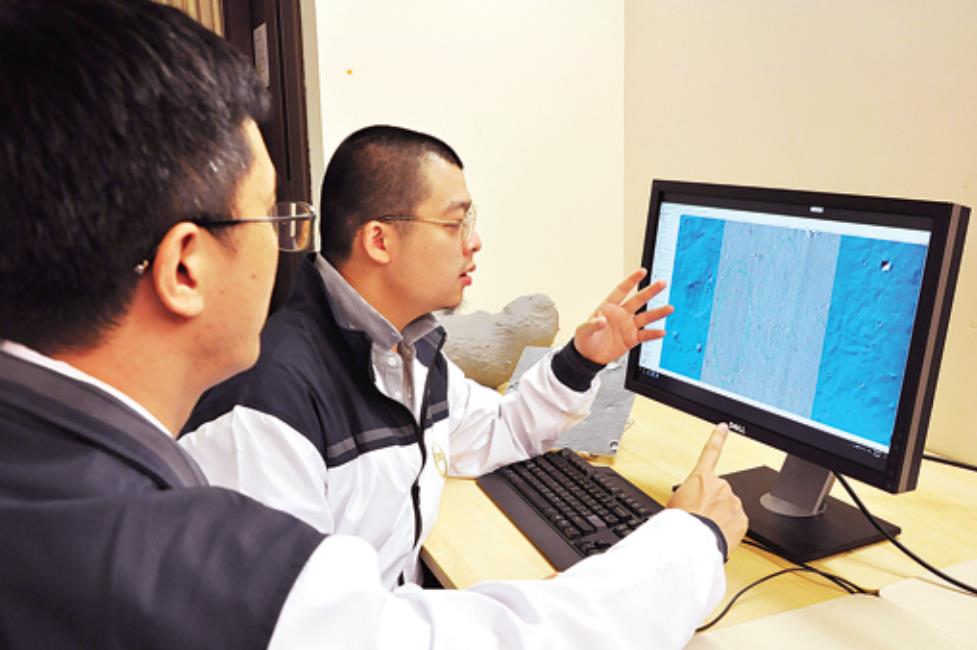HK team plays crucial role in mission to Mars


Weather worries
In addition to the findings obtained by Tianwen 1, the team's earlier work helped determine the landing area.
In 2016, the team members began analyzing the Martian surface. As a result of this work, Wu and his colleagues located a vast lava plain known as Utopia Planitia, which they targeted as an initial landing site in the planet's northern hemisphere, as it had sunny weather and flat terrain.
The team's main concern was the weather on Mars. The planet's notorious giant dust storms were looming as the northern Martian hemisphere entered summer. These storms could block sunlight powering the spacecraft and disrupt communications with Earth.
In June, 2018, bad weather put an end to the United States' robotic rover Opportunity, which failed to respond to any signals before NASA stopped sending them in February the following year.
The Hong Kong team members faced an extremely tight schedule. They had only about six weeks to conduct a thorough survey of the initial targeted 12,600-square-kilometer landing zone on Utopia Planitia. This area is about 11 times the size of Hong Kong, or two-thirds that of Beijing.
Technological challenges were faced. The Martian atmosphere, although much thinner than Earth's, affects the reflection of light and blurs images. The algorithms the team had at that time could not meet the requirements for the operation.
To reduce interference from the planet's atmosphere on the images, Morgan Liu Wai-chung, another Postdoctoral Fellow on the Hong Kong team, used his expertise to improve the algorithms.
Liu's work resulted in the algorithms transforming 2D images sent back by the probe into 3D models to reproduce scenes of the Martian surface despite atmospheric interference. The algorithms were also able to reconstruct detailed topography from single or multiple images captured by cameras.
Moreover, Wang and her teammates made full use of algorithms based on artificial intelligence that can automatically differentiate between craters and rocks through high-resolution images.
Previous algorithms, although used for lunar exploration, were not suitable for the Martian surface, as its craters had weathered worse than those on the moon, due to the Red Planet's atmosphere.
The improved algorithms developed by PolyU greatly accelerated the team's laborious work, which took in 670,000 craters, more than 2 million rocks and hundreds of volcanic cones spread throughout the targeted landing area. Without the improvements, these tasks would have taken years to complete. In 2013, it took a dozen PolyU students more than three months to "hand-pick "all potential obstacles within a much smaller landing area for the Chang'e 3 lunar mission.
Pressed for time, the Hong Kong team worked as if it were running a relay race. "Everybody was always ready to answer calls and to take over work," Wang said.
During the mission, Liu slept only four hours a day-the least among the team members, but his hard work paid off, as he produced one of the most accurate and detailed models for the targeted landing zone on Mars. The high-resolution cameras aboard Tianwen 1, which were developed by China and had a resolution of about 0.7 meters-10 times that of those on Chang'e 2-also contributed to Liu's work. Chang'e 2 was launched by a Long March 3C rocket on Oct 1, 2010.
The team's stress levels peaked the night before the scheduled landing. The volume of final data was so large that one researcher stayed up all night to analyze it, while others volunteered to remain in the laboratory to assist with this work.
When Wang put the results together and submitted them to Wu next morning, the professor had just three hours to analyze them and present them to the authorities in Beijing.
Based on the team's data, Wu recommended to Beijing the three safest oval-shaped areas within the targeted landing zone. He assessed the pros and cons of all options, using data, diagrams and logic.
Wang heard one senior official commenting on the plan, describing the team's work as "neat and deft" and saying the members had done well. Everyone appeared satisfied with the team's contribution.
Among the three landing areas suggested, Beijing settled for Area No 16, as it was the least-risky site found by the team, which had now accomplished its mission. However, Wang had to wait for further instructions until the big day-the landing.
When she received the first group of images transmitted to Earth after the landing, Wang, who was familiar with the Martian craters, instantly recognized their location. Her contribution helped significantly narrow the search for the lander using the cameras on the Tianwen 1 orbiter.
Wang's achievement was no coincidence. When she was assigned to help locate the lander, the 27-year-old scientist trained herself to memorize the features of the entire landscape, until each crater became as familiar "as the faces of friends".
A major announcement by China's space agency followed: "The lander of China's Tianwen 1 mission landed successfully on Mars in the early morning of May 15." The coordinates of the landing site were 25.1 degrees north and 109.9 degrees east.
The successful orbiting, landing and roving of Mars during a single mission marked a milestone in China's deep-space planetary exploration, making the country only the second nation after the United States to land and operate a rover on Mars.























